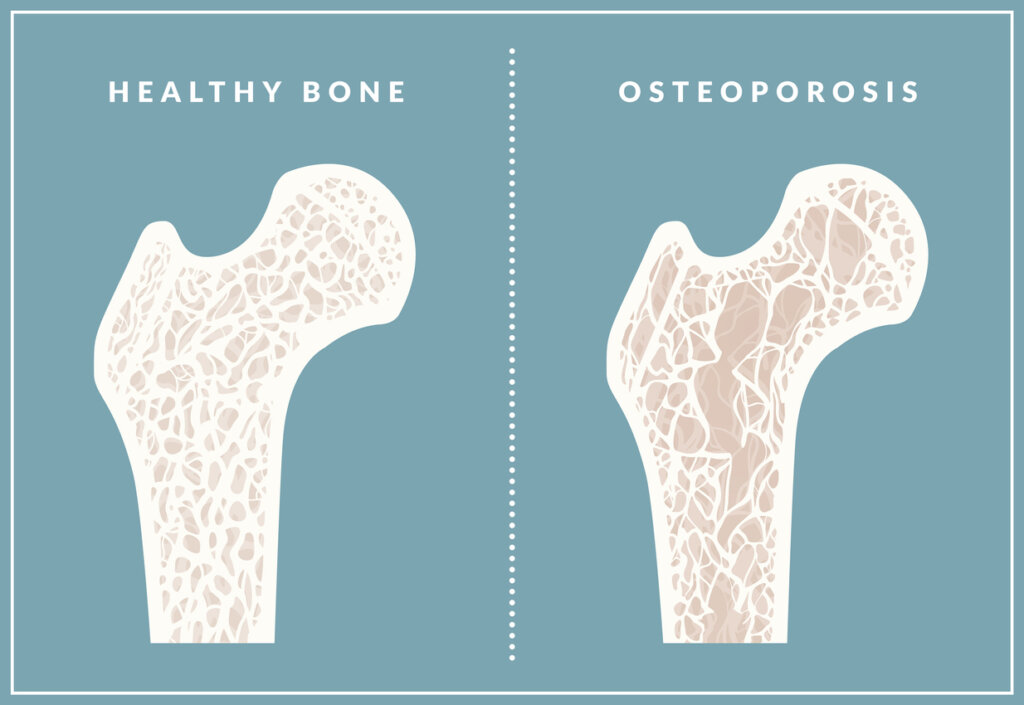Osteoporosis is a condition that silently and progressively weakens bones, often leading to fractures and significant medical expenses. With the ageing population growing worldwide, the prevalence of osteoporosis is on the rise, making cost management of treatment more important than ever. For many, the financial burden of managing this condition can be overwhelming, with expenses spanning medication, diagnostic tests, and lifestyle changes. But what if you could mitigate these costs while still receiving effective treatment? This article delves into strategies that aim to make osteoporosis treatment more affordable without compromising on quality. We’ll explore conventional treatments, innovative alternatives, and practical tips to reduce expenses. By understanding the various facets of osteoporosis and the costs associated with it, you can take proactive steps towards affordable and effective care.
Understanding Osteoporosis
What is Osteoporosis?
Osteoporosis is a skeletal disorder characterised by weakened bones and an increased risk of fractures. This condition is often referred to as the “silent disease” because bone loss occurs without symptoms until a fracture happens. Common areas affected include the hip, spine, and wrist, leading to pain and reduced mobility. As the disease progresses, individuals may experience height loss, a hunched posture, and persistent back pain due to vertebral fractures. The impact on quality of life can be significant, affecting physical health and emotional well-being.
Risk Factors and Causes
Several factors can increase the risk of developing osteoporosis. Age is a primary factor, with bone density naturally decreasing as you get older. Women are particularly at risk, especially post-menopausal women, due to hormonal changes. Genetics also play a role, so if osteoporosis runs in your family, your risk may be higher. Lifestyle choices, such as smoking, excessive alcohol consumption, and a sedentary lifestyle, can further contribute to bone loss. Additionally, dietary habits lacking in calcium and vitamin D can negatively impact bone health, emphasising the importance of a balanced diet.
Conventional Treatment Options
Medication and Supplements
Treatment for osteoporosis often includes medication to slow bone loss and build bone strength. Common medications include bisphosphonates, which help prevent bone resorption, and hormone-related therapies like oestrogen agonists/antagonists. Calcium and vitamin D supplements are frequently recommended to support bone health, as they are crucial for maintaining bone density. These medications and supplements play a vital role in managing osteoporosis but can contribute to overall treatment costs.
Medical Procedures
In addition to medications, certain medical procedures are integral to diagnosing and treating osteoporosis. Bone density tests, such as Dual-Energy X-ray Absorptiometry (DEXA), are essential for assessing bone health and monitoring treatment efficacy. In severe cases, surgical interventions may be necessary to repair fractures and stabilise bones. These procedures, while often necessary, can be costly, highlighting the importance of early detection and prevention.
The Cost of Osteoporosis Treatment
Direct Costs
The direct costs of osteoporosis treatment encompass expenses related to medication, doctor visits, diagnostic tests, and procedures. These costs can quickly add up, particularly if long-term medication and frequent monitoring are required. For many patients, balancing the need for effective treatment with financial constraints can be challenging.
Indirect Costs
Beyond the immediate medical expenses, osteoporosis can lead to indirect costs, such as lost wages due to time off work for treatment or recovery. Long-term care, particularly for those who suffer debilitating fractures, can further escalate expenses. These costs underscore the need for a comprehensive approach to managing osteoporosis that considers both medical and financial aspects.
Strategies to Reduce Treatment Costs
Prevention and Early Detection
Preventing osteoporosis or catching it in its early stages is one of the most effective ways to reduce treatment costs. Implementing lifestyle changes, such as engaging in weight-bearing exercises, maintaining a balanced diet rich in calcium and vitamin D, and avoiding smoking and excessive alcohol consumption, can strengthen bones and reduce fracture risk. Regular screenings, especially for those at high risk, can facilitate early detection and intervention, potentially saving on future medical expenses.
Utilising Health Insurance
Health insurance can be a valuable resource in managing osteoporosis treatment costs. Understanding your coverage options and knowing what is included in your plan can help maximise benefits and minimise out-of-pocket expenses. Be sure to check if your insurance covers medications, diagnostic tests, and treatments related to osteoporosis. Don’t hesitate to contact your insurance provider for clarification on benefits and coverage specifics.

Alternative and Complementary Therapies
Natural Supplements and Remedies
Natural supplements and remedies can provide additional support in managing osteoporosis while potentially lowering costs. Herbal supplements like soy isoflavones, red clover, and black cohosh have shown promise in supporting bone health. Additionally, ensuring adequate intake of essential nutrients like magnesium, potassium, and vitamin K can aid in maintaining strong bones. While these supplements can complement conventional treatments, it’s important to consult with a healthcare provider before incorporating them into your regimen.
Physical Therapy and Exercise
Physical therapy and exercise are powerful tools in managing osteoporosis. Engaging in strength training exercises can help improve bone density and muscle strength, reducing the risk of falls and fractures. Activities like yoga and Pilates can enhance balance and flexibility, further supporting bone health. Incorporating regular physical activity into your routine can be a cost-effective way to manage osteoporosis while improving overall well-being.
Community and Support Resources
Support Groups and Networks
Joining a support group or network can offer emotional and practical support for those dealing with osteoporosis. Sharing experiences and resources with others facing similar challenges can provide valuable insights into managing the condition affordably. Support groups can also connect individuals with community resources and services that may offer financial assistance or subsidised care.
Educational Workshops and Seminars
Participating in educational workshops and seminars can keep you informed about the latest research and advancements in osteoporosis treatment. These events provide opportunities to learn from experts, ask questions, and connect with others who are also managing the condition. By staying informed, you can make educated decisions about your treatment options and potentially discover new ways to reduce costs.
Technological Advancements in Treatment
Innovative Medications and Treatments
The field of osteoporosis treatment is continually evolving, with new medications and treatment options emerging regularly. Innovative drug therapies, such as biologics and monoclonal antibodies, are being developed to enhance bone strength and reduce fracture risk. Minimally invasive procedures, like vertebroplasty and kyphoplasty, can provide effective solutions for fractures with less recovery time, potentially reducing overall treatment costs.
Digital Health Tools
Technology can play a crucial role in managing osteoporosis more affordably. Digital health tools, such as mobile apps and online platforms, can help track medication schedules, monitor symptoms, and provide valuable health information. Telemedicine services offer the convenience of remote consultations, reducing the need for in-person visits and associated costs. Embracing these technological advancements can contribute to more efficient and cost-effective osteoporosis management.

Government and Non-Profit Assistance
Subsidised Health Programmes
Governments worldwide are recognising the need to support individuals with osteoporosis through subsidised health programmes. These initiatives can help cover the costs of medication, diagnostic tests, and treatments for eligible individuals. Researching available programmes and understanding the eligibility criteria can provide financial relief and ensure access to necessary care.
Non-Profit Organisations
Non-profit organisations dedicated to osteoporosis advocacy often offer financial aid and support services to individuals in need. These organisations work to raise awareness, provide educational resources, and advocate for policies that benefit those affected by osteoporosis. Reaching out to non-profit groups can provide access to valuable support networks and potential financial assistance.
Conclusion
Osteoporosis is a complex condition that requires a multifaceted approach to management. By understanding the direct and indirect costs associated with treatment and exploring strategies to reduce expenses, individuals can take control of their health without breaking the bank. Emphasising prevention, leveraging health insurance, exploring alternative therapies, and staying informed about technological advancements can all contribute to more affordable and effective osteoporosis care. Remember, the key to managing osteoporosis costs is a proactive approach, empowering individuals to make informed decisions and seek out resources that support their journey to better bone health.
FAQs
What are the most cost-effective treatments for osteoporosis?
The most cost-effective treatments for osteoporosis include generic medications, regular weight-bearing exercises, and dietary changes to increase calcium and vitamin D intake. These strategies can help manage the condition affordably and reduce the risk of fractures.
How can lifestyle changes impact the cost of osteoporosis treatment?
Lifestyle changes, such as improving diet, quitting smoking, and engaging in regular physical activity, can strengthen bones and reduce the need for expensive treatments. By prioritising bone health, individuals can lower their overall treatment costs.
What types of health insurance cover osteoporosis treatment?
Most health insurance plans cover osteoporosis-related expenses, including doctor visits, medications, and diagnostic tests. It’s important to review your insurance policy to understand the specifics of your coverage and maximise your benefits.
Are there any government programmes for osteoporosis patients?
Many governments offer subsidised health programmes for individuals with osteoporosis, providing financial assistance for medication, tests, and treatments. Researching available programmes and understanding the eligibility criteria can help reduce out-of-pocket costs.
Can alternative therapies significantly reduce treatment costs?
Alternative therapies, such as herbal supplements and physical therapy, can complement conventional treatments and potentially lower costs. However, it’s important to consult with a healthcare provider to ensure these therapies are safe and effective for your specific needs.
How can technology aid in managing osteoporosis affordably?
Technology, such as mobile apps and telemedicine services, can help track medication schedules, monitor symptoms, and provide remote consultations, reducing the need for costly in-person visits. Embracing digital health tools can contribute to more efficient and affordable osteoporosis management.
What role do community resources play in reducing costs?
Community resources, such as support groups and educational workshops, provide valuable information and emotional support for individuals managing osteoporosis. These resources can connect individuals with financial assistance programmes and offer practical tips for reducing treatment expenses.